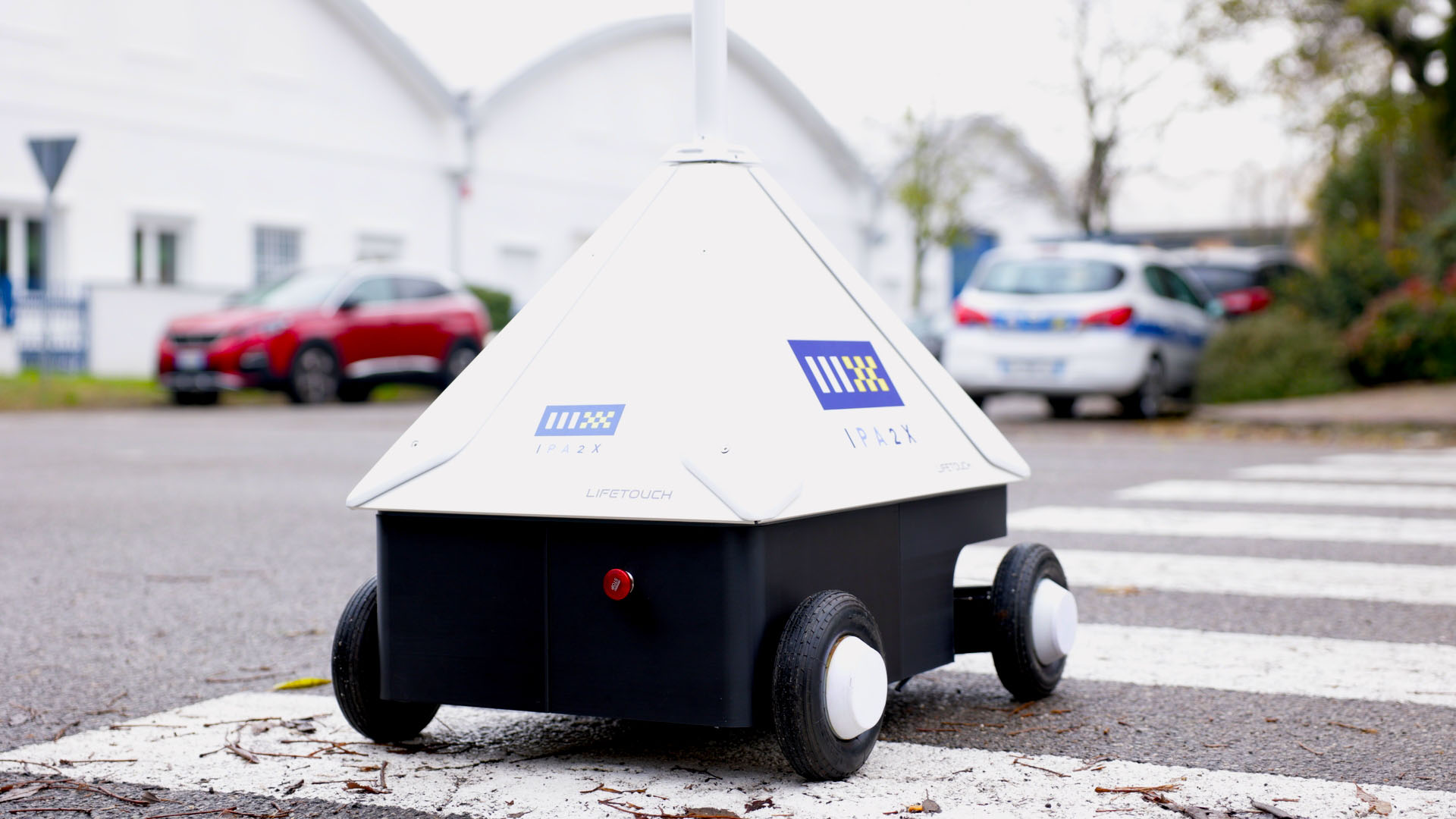Cars communicating with pedestrians
Another interesting part of the project – and an innovation specifically developed by Škoda – is a signalling grille on the front of the car that lets it communicate with its surroundings. It’s quite difficult to send clear and unambiguous warnings to pedestrians from a distance, so the developers came up with a replacement for the car’s radiator grille. The grille has built-in LED strips that allow pictograms and even entire animations to be displayed.
 The robotic rover IPA2X is designed to help cross the road safely.
The robotic rover IPA2X is designed to help cross the road safely.
“This is essentially a complete replacement for the Enyaq iV’s backlit Crystal Face. We made a new body with LED strip holders. The LEDs are programmable and each one can be controlled completely separately, making it possible to create animations. The final step was a lightweight diffusion layer and a cover to ensure the mask could withstand the harshest weather conditions during testing,” explains Zdeněk Herda, specialist for HMI simulations and automatic driving at Škoda Technical Development.
This is the scenario: a car approaches a pedestrian crossing and lets the pedestrians know sufficiently in advance that it has spotted them. It stops and displays, for example, green arrows to tell them they can cross. Once the pedestrians have crossed and the car is about to set off, it again displays the signal “Stop, stay off the pedestrian crossing”. Another scenario is that a car approaching the crossing cannot stop for whatever reason – then it has to send out a clear signal: “Caution, I can’t stop, do not step out onto the crossing”.
 The signalling grille shows pedestrians it’s safe to cross.
The signalling grille shows pedestrians it’s safe to cross.
The symbols being tested include green arrows, a green figure of a man, the colours we’re all used to from traffic lights, a warning triangle or a red triangle with a cross. These are symbols everyone understands. At this juncture the project is trying out different scenarios and the possibilities that these technologies allow. As Zdeněk Herda explains, in the future there could also be static elements – for example, a traffic light at a pedestrian crossing would keep track of where people are in the area, how many people there are and whether they’re approaching the pedestrian crossing or already on it, and would send the information to approaching cars.

































